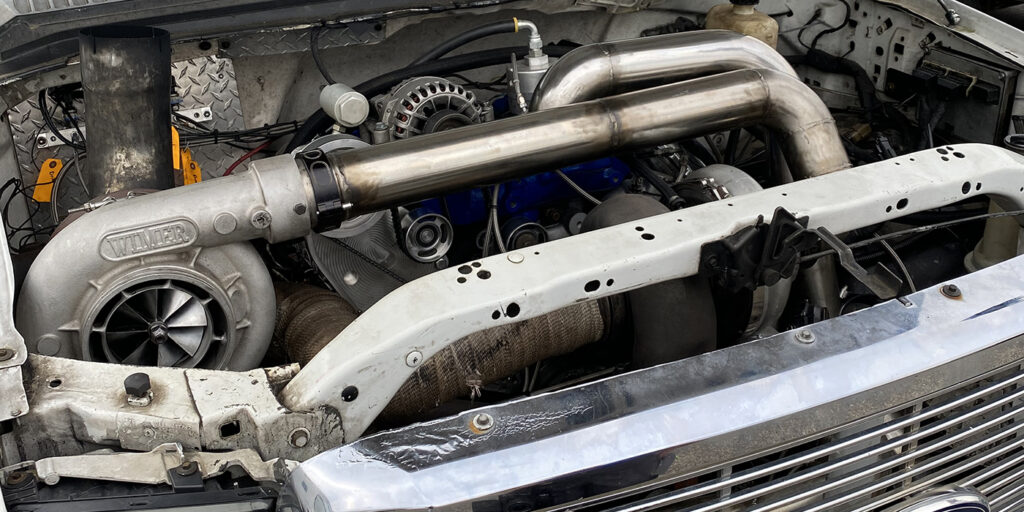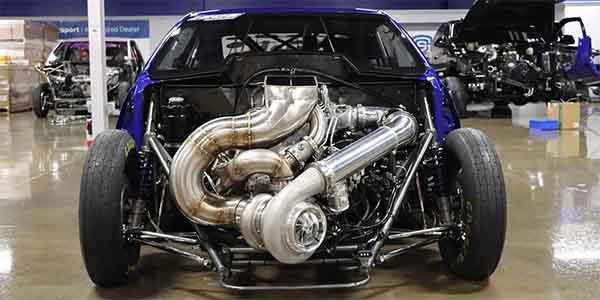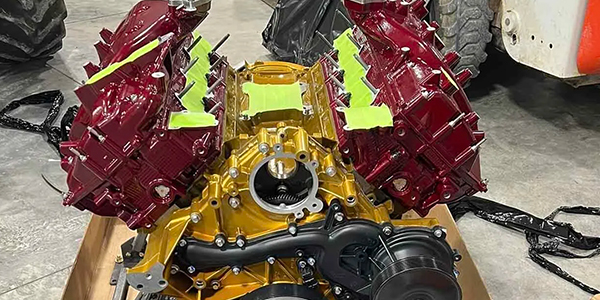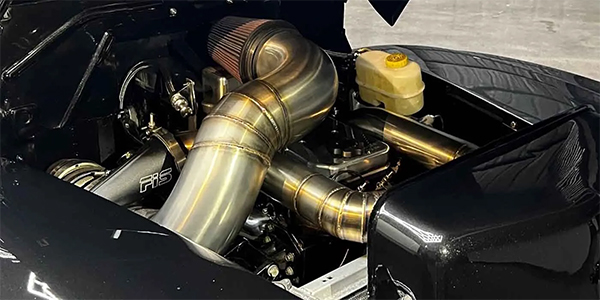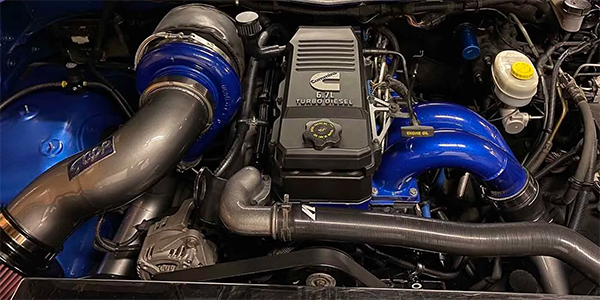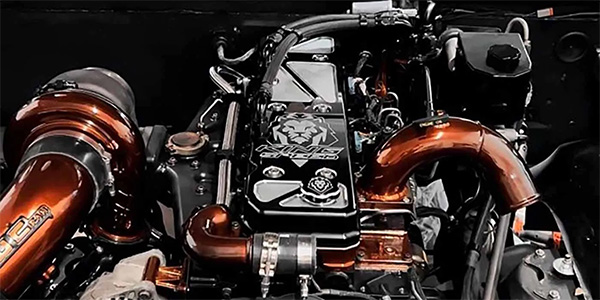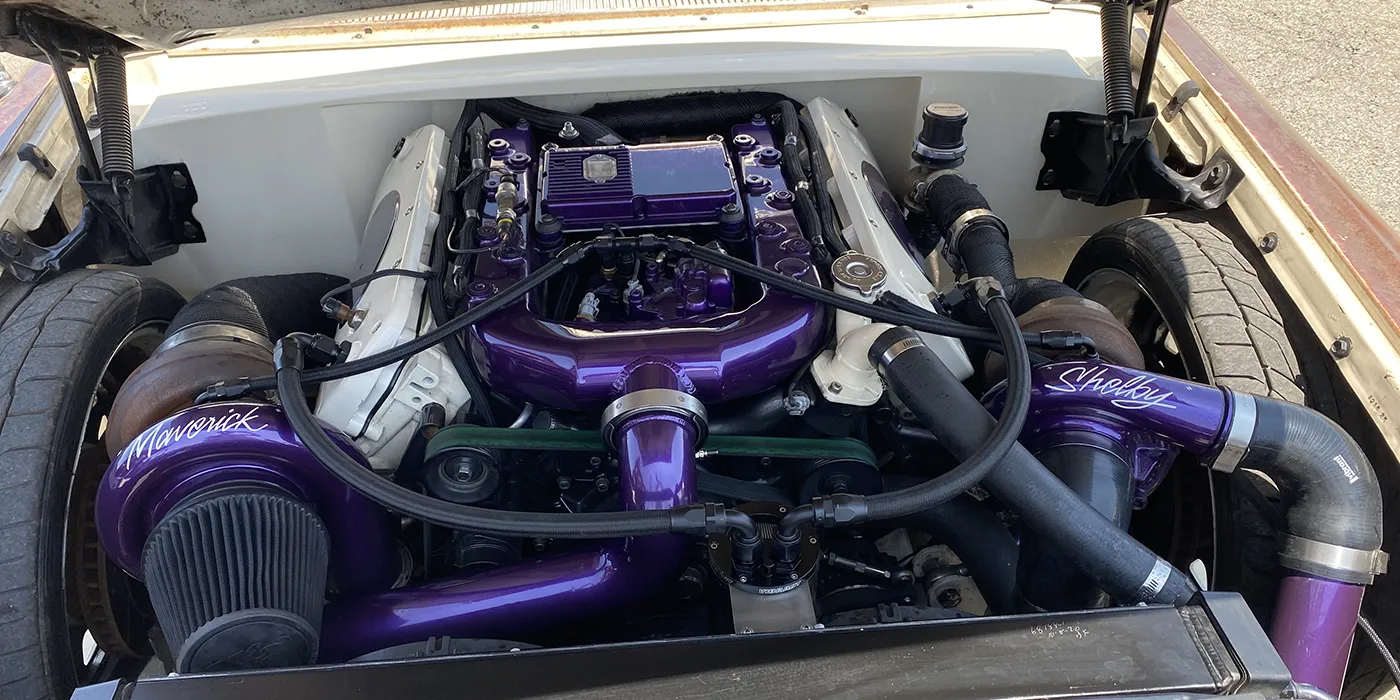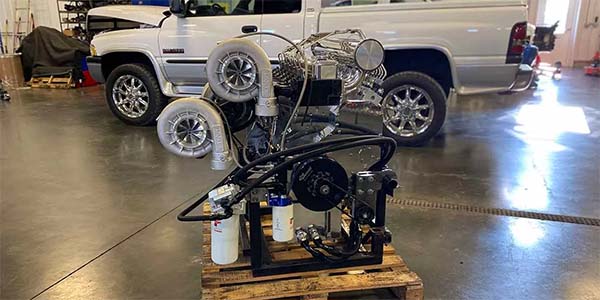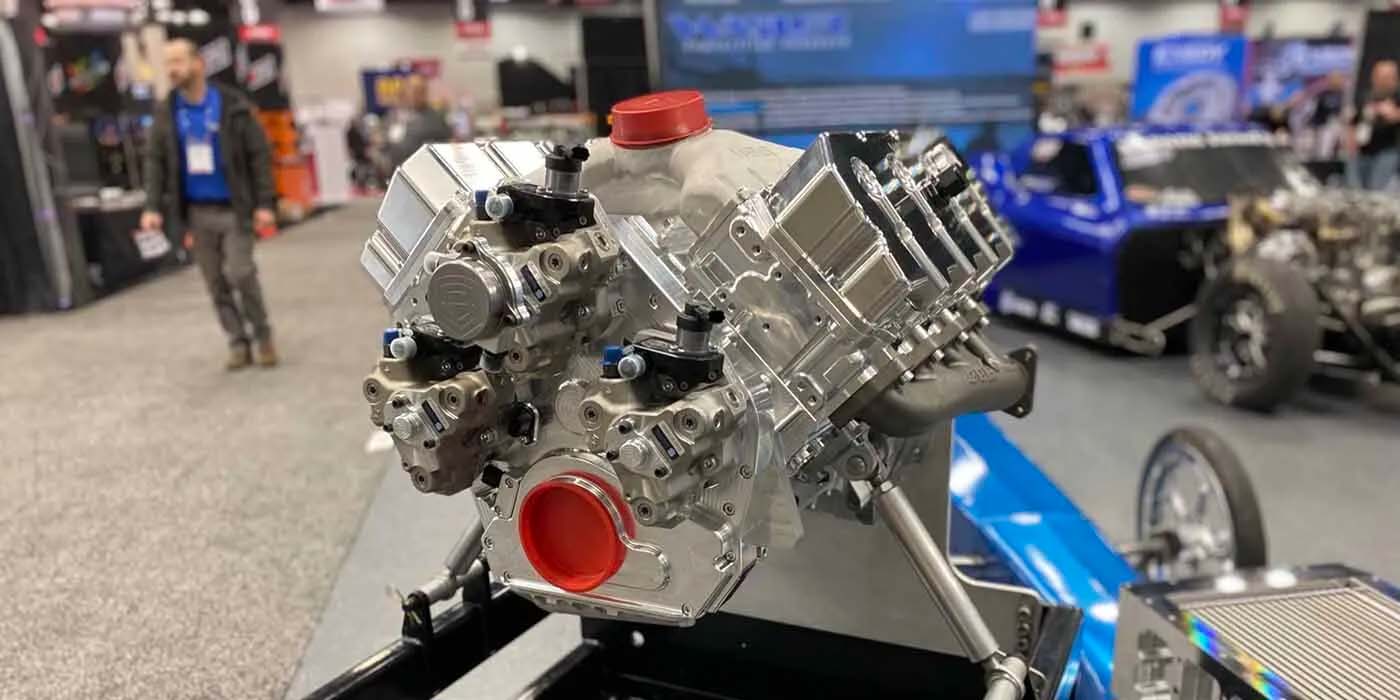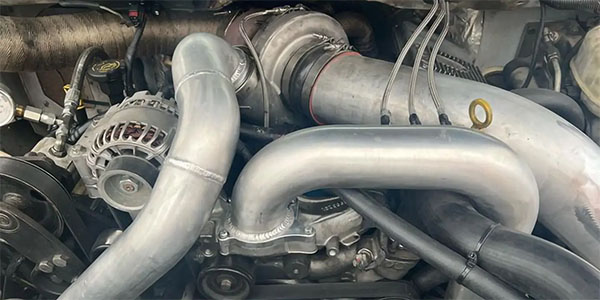When it comes to engine reputation, few platforms have it as bad as the 6.0L Powerstroke. However, that’s exactly why guys like Jesse Warren are using the 6.0L Powerstroke in competition – to prove there are ways to make the engine a certifiable threat at the highest level of diesel motorsports – and Jesse’s team has one of the most badass Powerstrokes around.
Jesse Warren and his team at Warren Diesel Injection have been competing for more than a decade with a 2006 Crew Cab Ford F-350.
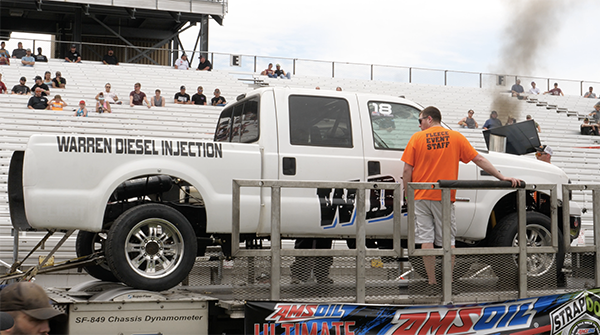
“We’ve had this truck for a long time,” Warren says. “We used to use this as a hauling truck for our trailers for a number of years. We started racing it a little and then slowly we turned it into a competition truck. At this point, it’s just for UCC now.”
Jesse’s ascension in diesel motorsport coincided with him opening his diesel shop, Warren Diesel Injection (WDI), back in 2010 located in Guys Mills, PA. With Jesse’s knowledge and years of testing and research, today, WDI offers some of the largest competition fuel injectors in the market for the 6.0L Powerstroke platform.
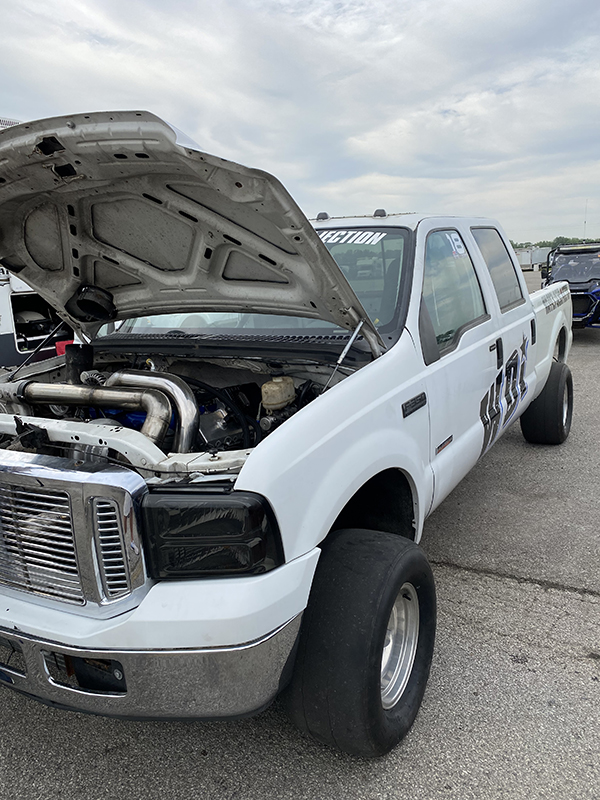
All of WDI’s injectors are remanufactured, flow tested and put through a series of tests to provide high quality components. That same dedication comes through in Jesse’s competitive side. As he got more into diesel competition, he participated in the Diesel Power Challenge in 2015 and finished third overall. From there, Jesse was invited to the inaugural Ultimate Callout Challenge (UCC) in 2016. He was the highest finishing Ford Powerstroke truck with a sixth place overall finish that year.
He’s returned to UCC every year since, albeit with varying success. However, he recorded a 1,910-horsepower dyno pull in 2019. During those years, Warren’s F-350 was powered by a 6.0L block with a factory crank, Wagler billet rods, custom Diamond pistons, and custom ported 6.0L cylinder heads. Fuel was delivered through a set of 9mm 760cc injectors along with a custom high-pressure oil system. They also custom built a compound turbo setup with a Bullseye NLX 475 and a Wimer 4.4 HX82 to give the engine enough air to make a lot of power.
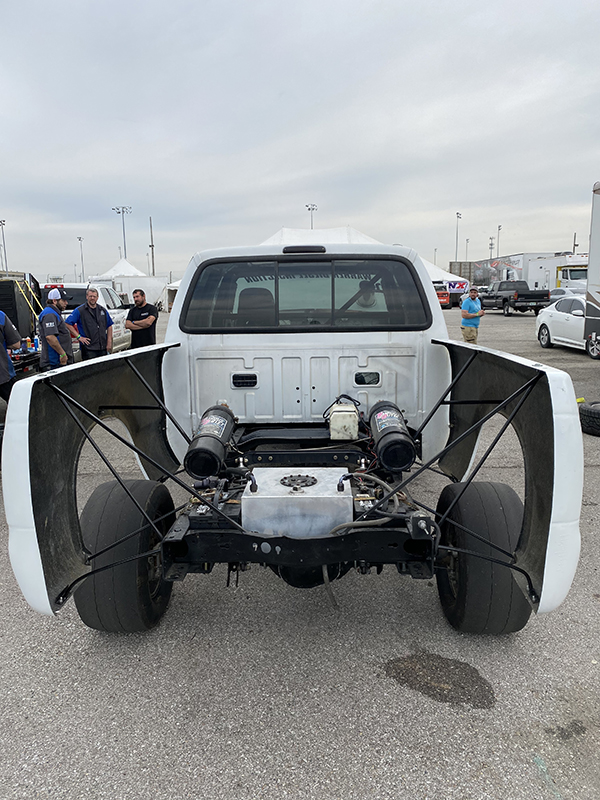
With the 2020 UCC competition pushed to 2021, competitors like Jesse had two years to regroup and get their trucks set up for what would be some of the toughest competition to date.
During day two of UCC 2021, we were able to get a few minutes with Jesse to learn how his truck and engine set up had changed since 2019.
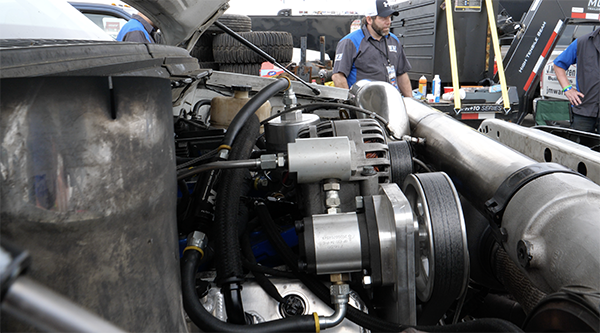
“We changed some things up this year,” Warren says. “We run this truck primarily as a sled pulling truck and last year we had broken multiple blocks. I think three blocks. Coming into 2021, we wanted a strong engine, so we ended up doing a 6.4L/6.0L hybrid engine.
“We took a 6.4L block and we machined the back of the block with an adaptor plate to accept the 6.0L high-pressure oil pump. We had to mill out the rocker boxes and we made custom stud adapters to go on top of the 6.4L stud. We also sleeved the block down to a 6.0L, so it’s still a 6.0L displacement. We put ductile iron sleeves in it and it’s a filled block and filled heads.
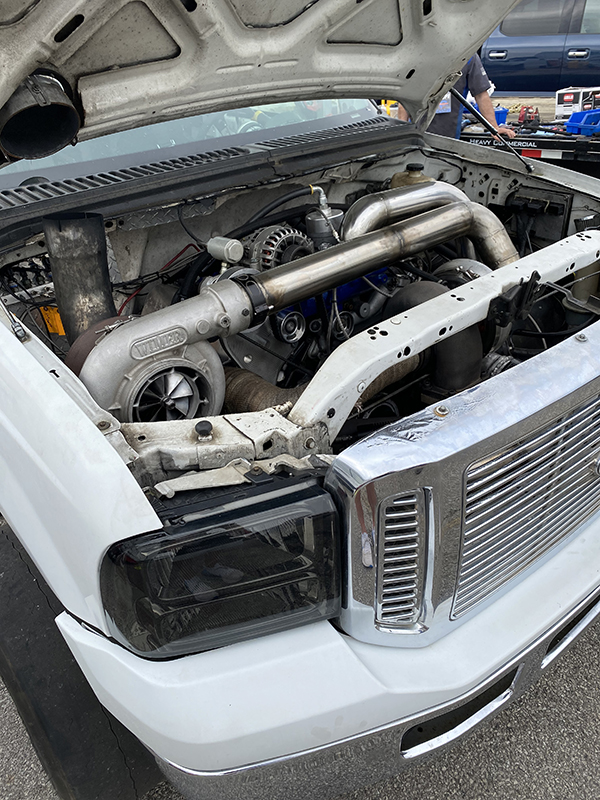
“The 6.4L studs accept a 20mm 6.0L head. It’s still running a 6.0L crank and it has a 6.0L front cover. We went to the 6.4L block because that gives us a lot of extra wall thickness.”
While both the block and heads are filled, Jesse says he has a solid billet block coming out soon that will eventually find its way into the truck, but for now, the filled block and heads do the trick.
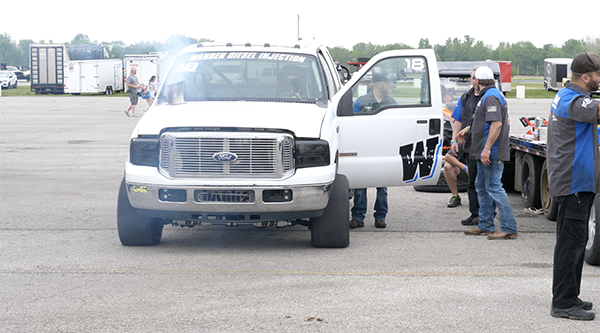
“Internally, we’re running a solid lifter camshaft from Colt Cams,” he says. “It’s got 460 lift, but it could be a little bigger. We have solid billet adjustable rockers, solid lifters, Wagler rods, and Mahle billet pistons.”
The 6.4L/6.0L also features two turbochargers – a Wimer 4.7 that’s close to 120mm and a GT55 94mm turbo.
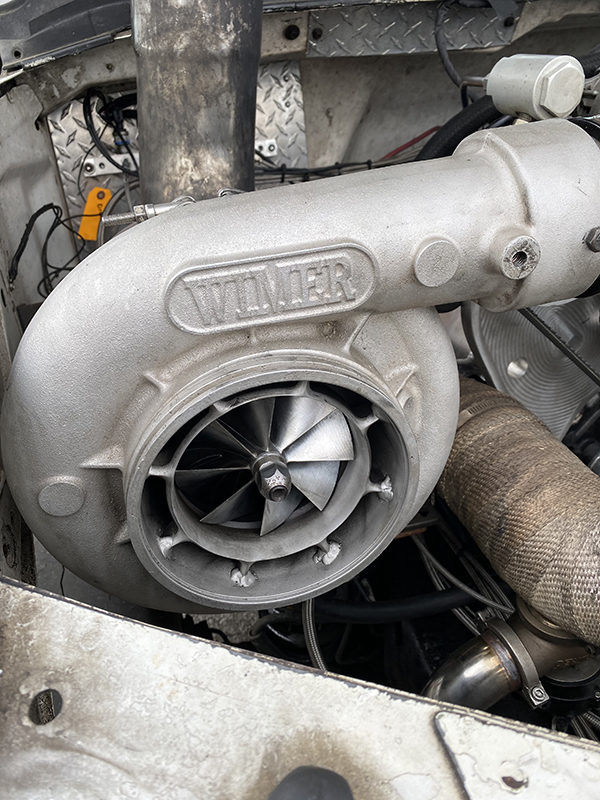
“We have both of those gated for nitrous,” Warren says. “During testing on the engine dyno, we didn’t get a full sweep. We wanted to pull down to 4,000-4,500 rpm and we had too tight of a turbo housing on the high pressure, but we got down to 5,000 rpm before we lost the charger. We were at 2,000 horsepower at 5,000 rpm.”
With 2,000 horsepower on hand, Jesse’s F-350 has come a long way from simply being used as a tow truck. We’ll be excited to see how the 6.4L/6.0L hybrid engine continues to develop.
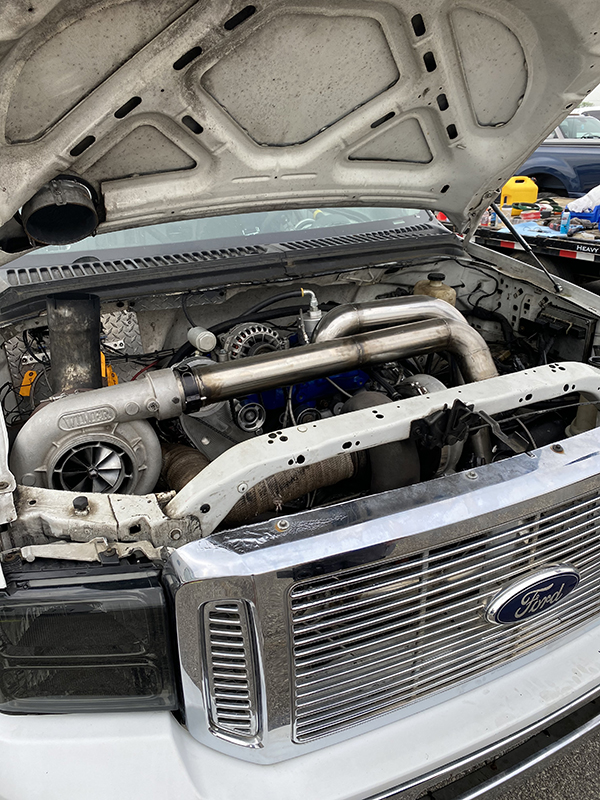
Diesel of the Week is sponsored by AMSOIL. If you have an engine you’d like to highlight in this series, please email Engine Builder Editor Greg Jones at [email protected].
This article is courtesy of Engine Builder.

